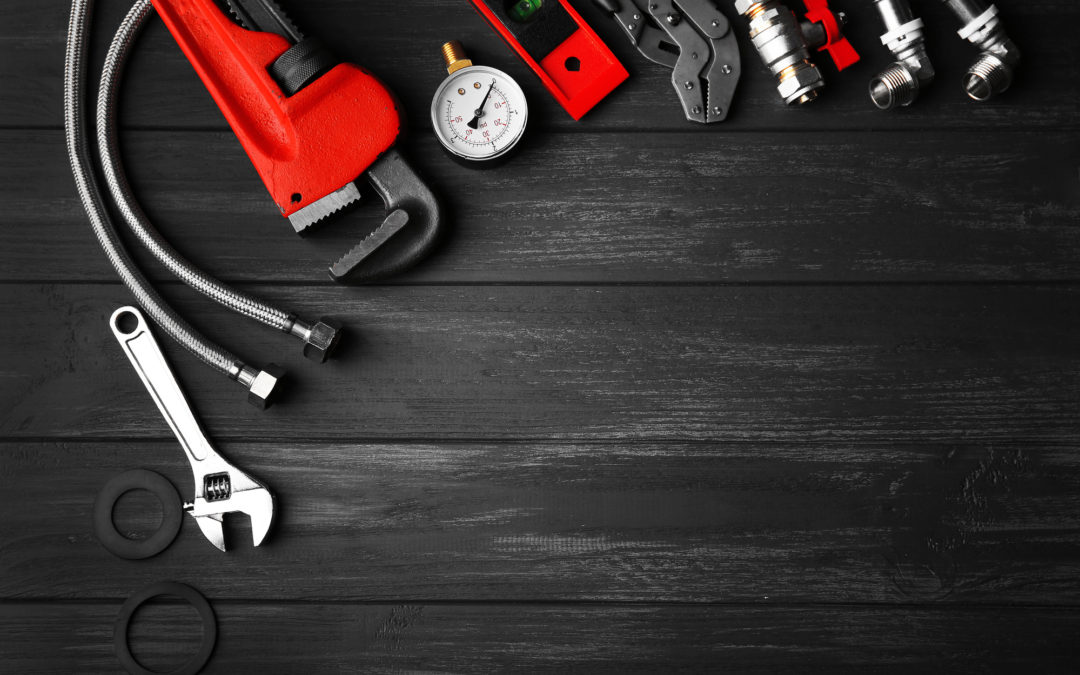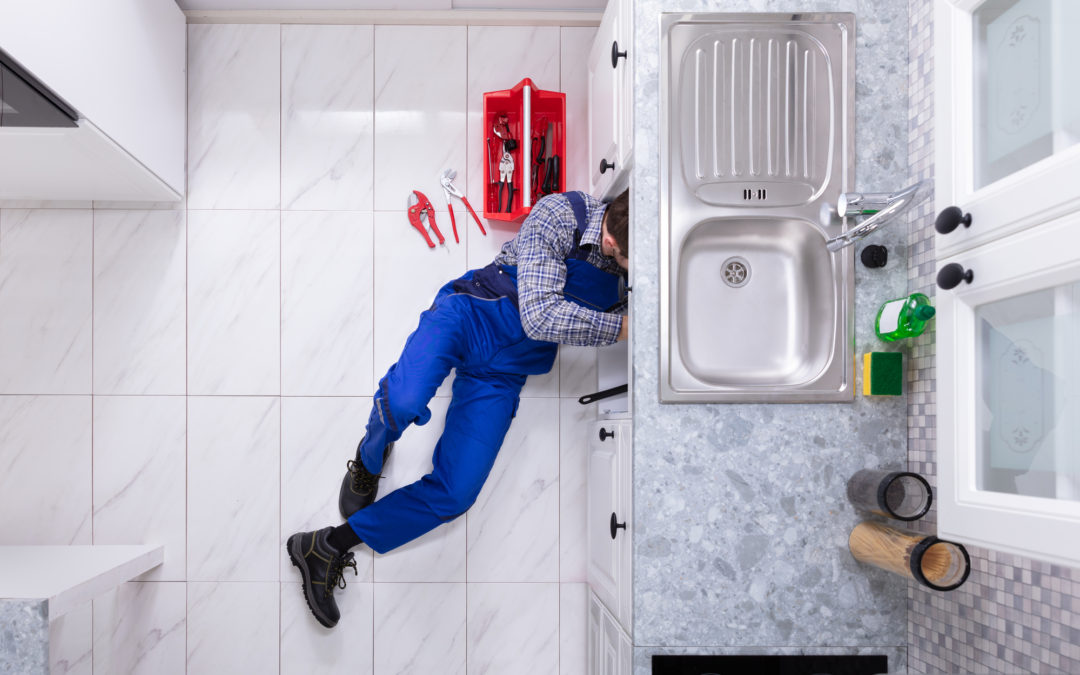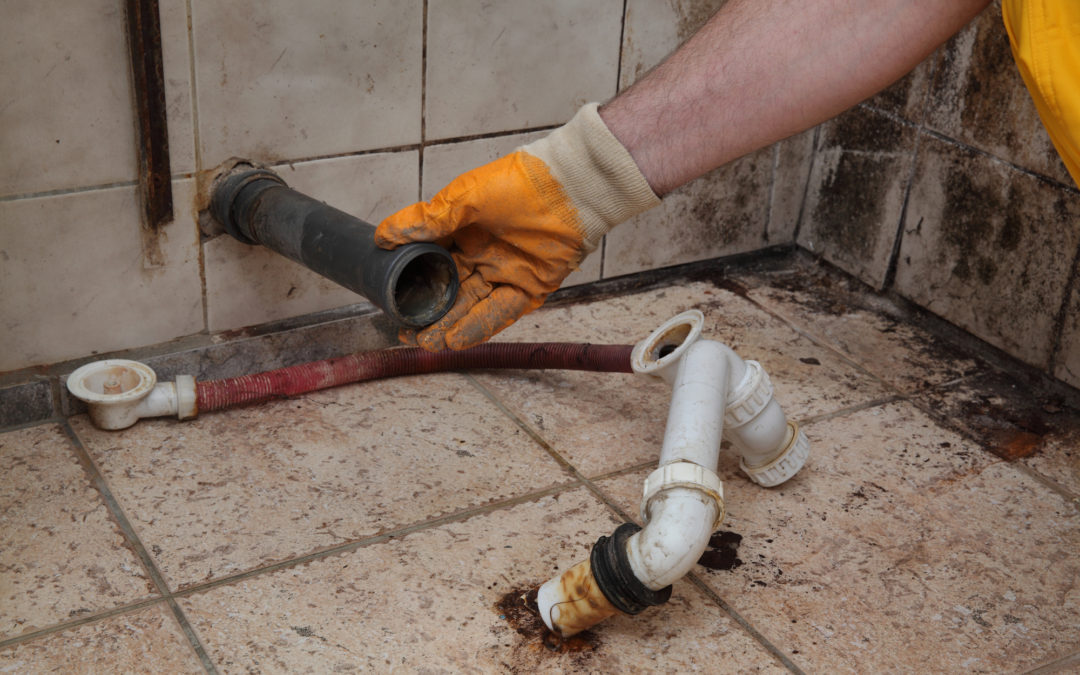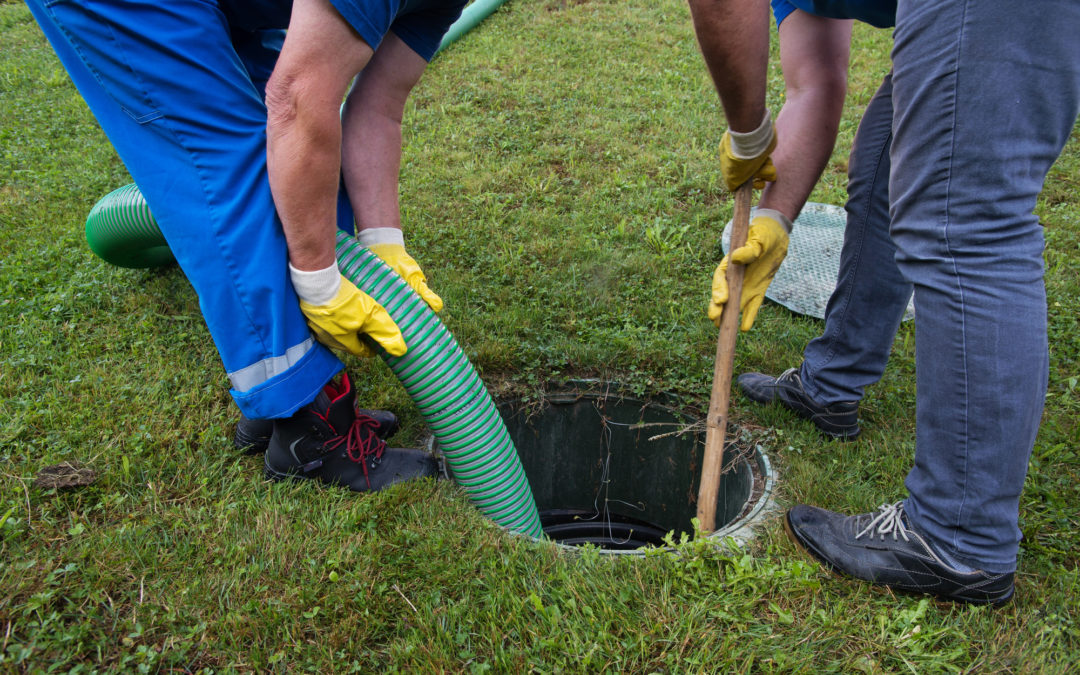
by Brandon | Jul 25, 2023 | News
In the world of modern plumbing, the demand for trenchless rehabilitation is increasing rapidly. It requires minimum interruption, maximum versatility, and safe operational work. With the inception of HammerHead’s BlueLight CIPP lining system, plumbers are now able to provide an effective trenchless repair with greater efficiency and ease.
Many factors come into play when considering the best CIPP lining system, with safety being at the forefront. The BlueLight LED CIPP lining system from HammerHead is one of the most user-friendly trenchless rehabilitation products that ensures user safety and protection.
The newly redesigned BlueLight LED CIPP lining system has been engineered to put the user experience at the forefront. The system is the ideal solution for CIPP liner installations that require safety, speed, and precision. A close look at the new features of the BlueLight LED system will provide a deeper understanding of its functionalities and how they provide a safe, user-first experience.
Liner Installation Process
The BlueLight CIPP lining system installation process involves the following steps: pre-lining preparation, liner installation, curing, and post-lining. The pre-lining preparation involves the cleaning and inspection of the damaged piping using high-pressure water, ensuring that the pipe is clean and has a smooth surface.
Before the liner installation, the resin, fiberglass, and felt are custom-designed to fit the specific piping dimensions. The liner is then folded and loaded into the inversion drum, which will invert the liner into the damaged pipe.
The curing process is then initiated by the BlueLight LED curing light. The BlueLight LED system is much safer than traditional systems that use hot water or steam for curing. The curing process takes about an hour, and the pressure is released from the liner once cured.
The post-lining process involves the trimming of the liner ends. This is done using a robotic cutter, which guarantees accurate and consistent precision cuts.
BlueLight LED CIPP Lining System User-Friendly attributes
The most significant benefit of HammerHead’s redesigned BlueLight LED CIPP lining system is its user-friendliness and safety features. The BlueLight LED system provides a safe and efficient service to the user. It is the perfect solution for small or large trenchless rehabilitation jobs.
The system is equipped with multiple safety features that protect the user during the installation process. Firstly, the resin drums are equipped with low-level safety sensors that prevent the resin from running out and causing an explosion. Secondly, the pressure relief valve ensures that the pressure remains low, and the user is not exposed to high-pressure conditions.
The BlueLight LED technology’s main benefit is that it provides an instant confirmation of curing. It allows plumbers to have instant feedback on the curing process and saves time before proceeding with the post-lining process. Furthermore, the curing light is straightforward to use and manipulate, providing for a positive user experience.
The BlueLight LED system is versatile and can be used for both residential and commercial plumbing repairs. It’s low profile, and compact design allows for ease of transport while still accommodating a large quantity of resin for multiple projects.
Conclusion
HammerHead’s BlueLight LED CIPP lining system is a game-changer for the plumbing industry, providing high-quality, trenchless pipe rehabilitation that incorporates speed, quality, and safety. The LED curing technology is a revolutionary advancement in this field, providing an instant, accurate confirmation of the curing process. The user-friendly attributes of the BlueLight system, such as the low-level safety sensors and pressure relief valves, make this system the ideal option for a safe and seamless trenchless rehabilitation experience.
If you require assistance with plumbing services such as trenchless rehabilitation, give Ace Plumbing Repair a call at (844) 711-1590 or visit aceplumbingrepair.com to learn more about how we can help you with your plumbing needs.

by Brandon | Jul 25, 2023 | News
Drain systems are an essential part of every household’s plumbing system. Drains carry wastewater away from homes, and it’s crucial to keep the drain system in good condition to prevent backups or damages. One of the most challenging aspects of plumbing maintenance is identifying the precise location of a blockage. In this article, we’ll discuss the various methods that plumbing professionals use to enter a drain system.
Drain cameras Inspection
Before deciding on the entry point for a clogged drain, plumbers inspect the pipes using cameras. Professional plumbers use drain cameras to inspect the drain system’s interior and get an idea of the blockage’s location. These cameras are small enough to fit in any pipes and come with LED lights, which provides clear visibility.
Plumbers insert a waterproof, remotely-controlled camera into the drainage pipes and navigate it through the pipes. The camera sends real-time footage to the plumber, who can make a proper diagnosis based on the images. Once the plumber analyzes the footage, he can make informed decisions about the best method for clearing the blockage.
Plunger
Plungers are an efficient and straightforward tool for clearing clogged drains. They work by creating a vacuum that sucks out debris, clearing the pipe. Plungers come in different shapes and sizes, and the type of plunger you use depends on the type of drainage system.
To clear a toilet blockage, use a flange plunger, which is a plunger designed to fit into the toilet’s drain hole. Place the plunger at the bottom of the toilet and create a vacuum to suck out the blockage. For sink or tub blockages, use a standard plunger. Place the plunger over the drain and pump it up and down repeatedly until the water begins to drain.
Hydro-Jetting
Hydro-jetting is a popular method for clearing blockages in the drain pipes. Hydro-jetting involves using high-pressure water to blast through the blockage and clear the pipe.
A professional plumber will insert a specialized hydro-jetting nozzle into the drain system and attach it to a high-pressure hose, which blasts water at a pressure of around 10,000 psi. The force of the water removes any clogs, including grease, hair, and other debris. Hydro-jetting is highly effective, making it a popular method for clearing clogs in residential and commercial properties.
Snake
A snake, also known as an auger, is a flexible metal cable that plumbers use to clear blockages in pipes. A snake is a long, coiled wire that comes with a handle on one side and a corkscrew on the other.
The plumber inserts the snake into the drain until it hits the obstruction. Then the plumber will start twisting the handle, making the corkscrew grab onto the blockage. The plumber continues twisting the handle until the auger cuts through the blockage, removing the clog.
Conclusion
Drains play a significant role in any plumbing system. It’s important to keep them clean and clear to avoid blockages. If you experience a blockage, having a professional plumber is essential. With the right tools and equipment, a plumber can diagnose and clear the blockage efficiently and effectively. With the various methods discussed above, you can have confidence in your plumber’s ability to clear your drain blockage. If you’re experiencing drain blockage, give Ace Plumbing Repair a call at (844) 711-1590 or visit our website aceplumbingrepair.com for professional drain cleaning services.

by Brandon | Jul 25, 2023 | News
Have you noticed that your bank balance seems to be dwindling faster than usual? Have you started rationing out your grocery shopping or limiting your utilities usage? If these scenarios seem relatable, you’re not alone. Many households face financial struggles, especially during unexpected circumstances such as the recent pandemic.
However, it’s not all doom and gloom. By identifying problem areas in your daily household expenditures, you can take measures to effectively manage your finances. Here are a few ways to help you gain control over your spending and save money.
1. Check Your Water Bill
If you’re noticing a spike in your water bill, it could be due to a leak in your pipes. Even a small leak can add up to significant costs over time, so it’s essential to identify and fix any issues promptly. You can do this by checking for noticeable damp areas or damage to your walls and ceiling. However, sometimes, leaks can occur in hidden places, so it is crucial to engage a plumbing expert to conduct a thorough inspection of your plumbing system.
Also, consider installing water-saving fixtures such as low-flow showerheads and faucets. These can be cost-effective over time since they use less water and, therefore, less energy to heat it.
2. Manage Your Water Heater Usage
A water heater accounts for up to 18% of your monthly energy usage, contributing significantly to your utility bill. To reduce costs, consider adjusting your water heater’s temperature to 120 degrees Fahrenheit or lower. This temperature is suitable for most households and will also prevent the risk of scalding. Additionally, turn off the heater when not in use, such as when going on vacation.
If you notice your water heater is taking longer than usual to heat up, it could also be a sign of damage or a buildup of sediment, which affects its efficiency. Hire a plumbing professional to carry out an inspection and flushing of the tank to remove any buildup, which will help the heater function efficiently.
3. Fix Plumbing Issues Early
Issues such as a running toilet or dripping tap may seem like minor problems, but they can add up to substantial costs over time. A running toilet can waste up to 200 gallons of water per day, while a dripping tap can waste up to 2,000 gallons of water per year.
Engage a plumbing expert to fix these issues promptly, and you’ll see a significant reduction in your water bill. Additionally, fix leaks early to prevent water damage to your walls and ceiling, which can result in costly repairs.
4. Invest in Regular Maintenance
Regular maintenance of your plumbing system is essential to keep it functioning efficiently and prevent unexpected breakdowns or expensive repairs. Engage a plumbing expert to conduct a thorough inspection and cleaning of your system to identify any underlying issues and fix them promptly.
The investment in regular maintenance will save you money in the long run by extending the lifespan of your system and preventing unexpected repairs.
Conclusion
Taking control of your household finances can seem like an overwhelming task, but it is achievable with small changes in your daily habits. By identifying problem areas in your spending and engaging plumbing experts to fix plumbing issues, invest in regular maintenance and install water-saving fixtures, you’ll see a significant reduction in your expenses and have more control over your finances.
If you need help with plumbing repairs or maintenance, contact our team at Ace Plumbing Repair. Our plumbing experts are available 24/7 to provide you with affordable and reliable services. Call us today at (844) 711-1590 or visit our website at aceplumbingrepair.com to schedule an appointment.

by Brandon | Jul 25, 2023 | News
As a plumbing services company, one of the essential skills required is reading schematics. Schematics are graphical representations of systems and their related components. In the plumbing industry, schematics are used to provide a visual representation of plumbing systems, which can include pipes, fittings, and fixtures.
The Importance of Reading Schematics
Reading schematics is an essential skill for anyone working in the plumbing industry. It provides a clear representation of the plumbing system, making it easier to understand how the different components of the system work together. This is important because it helps plumbers to diagnose and fix problems in the plumbing system.
Schematics can be used to identify the location of pipes, which is especially important when working on a new installation or when making repairs to an existing system. The diagram can show the location of each pipe, the type of material used, and the size of the pipe. This information is useful in determining the appropriate method of repair or replacement required.
Schematics can also be used to locate fixtures such as sinks, showers, and toilets. The diagram can show the connection of each fixture to the main plumbing system, including the type of pipe used and the distance from the fixture to the system. This information is important when making repairs to the fixtures or when replacing them.
Reading schematics can also help plumbers to understand the flow of water through the plumbing system. The diagram can show the direction of water flow and the types of pipes used to transport water. This information is crucial in ensuring that water flows the way it should, without any interruptions or blockages.
Reading schematics is also crucial in ensuring that the plumbing system meets the required safety standards. A good schematic will show the location of valves and other safety measures in the system, including shut-off valves and backflow preventers. This information is important in ensuring that the plumbing system is safe to use and is not a hazard to health or property.
In addition, reading schematics can help plumbers to communicate effectively with clients. Schematics can be used to explain the plumbing system to clients, especially when it comes to problems and repairs. By using the diagram, plumbers can help clients to understand the problem and what is required to fix it.
Overall, reading schematics is an essential skill for anyone working in the plumbing industry. It provides a clear and concise representation of plumbing systems, making it easier to understand how the different components of the system work together. This skill is important in diagnosing and fixing problems, locating pipes and fixtures, understanding the flow of water, ensuring safety standards are met, and communicating effectively with clients.
Conclusion:
At Ace Plumbing Repair, we understand the importance of reading schematics in the plumbing industry. Our team of experts is skilled in reading and interpreting schematics to diagnose and fix problems in the plumbing system. We ensure that our clients are well-informed about the problems and repairs required, using schematics to explain the system and what is needed to fix it. For all your plumbing needs, give us a call at (844) 711-1590 or visit our website at aceplumbingrepair.com.

by Brandon | Jul 25, 2023 | News
As a homeowner, you may face several plumbing issues, especially those related to the drainage system. One vital aspect of your plumbing system is the underground drains that divert wastewater from your home to the municipal sewer. These pipes are buried underground, making them difficult to access or repair, but they play a crucial role in keeping your property clean and hygienic. However, one common issue that many homeowners face is improper installation or repair of these underground drainpipes.
A recent incident that happened to a homeowner in our service area highlights this problem. The homeowner hired a plumber to replace a damaged section of the underground drainpipe that runs under their front yard. The plumber dug a trench and installed a new PVC pipe to replace the damaged section. However, instead of using a Fernco coupling to join the new pipe to the existing one, the plumber glued them together using PVC cement.
While this may seem like a minor issue, it can lead to serious consequences down the road. Fernco couplings are specially designed for joining pipes of different materials or diameters. They have a rubber lining that can expand or contract to accommodate any movement in the pipes caused by temperature changes or ground settling. When two pipes are glued together, there is no give, and any movement could cause the joint to crack or break.
In the case of the homeowner mentioned above, within a few months of the repair, they started experiencing issues with their drainage system. The water was not flowing properly, and there was a foul smell coming from the yard. When they contacted our plumbing services team, we found that the PVC joint had cracked, causing a leak in the underground drainpipe. The water had seeped into the soil, causing it to shift and collapse, leading to further damage to the pipes.
To fix the problem, we had to excavate the area, remove the damaged pipes, and install a new section of the drainage system. The repairs were not only time-consuming and costly but also caused significant damage to the homeowner’s property.
We cannot stress enough how important it is to hire a professional plumbing services company that is licensed, insured, and experienced in handling underground drainage system repairs. While it may be tempting to DIY or hire a handyman who offers cheap rates, this could end up costing you more in the long run. Improper installation or repairs of underground drainpipes can lead to a host of issues, from water damage to property damage and health hazards.
At Ace Plumbing Repair, we have a team of expert plumbers who are trained in handling all types of plumbing issues, including underground drainpipe repairs and installations. We use only the highest quality materials and equipment to ensure that your plumbing system is functioning optimally. We are also dedicated to providing our customers with the best possible customer experience, from the moment you contact us to the completion of the job.
In addition to our professional plumbing services, we also offer preventative maintenance services to help you avoid costly repairs down the road. Regular inspections and maintenance of your underground drainpipes can help identify any issues before they escalate and cause significant damage. We can also help you with drain cleaning services, which can prevent clogs from forming and causing backups in your drainage system.
In conclusion, proper installation and repair of underground drainpipes are essential for maintaining a healthy and hygienic living environment. When hiring a plumber for this job, make sure to choose a licensed, insured, and experienced plumbing services company. Additionally, be wary of quick fixes and cheap rates, as they could end up costing you more in the long run. At Ace Plumbing Repair, we are committed to providing our customers with the best possible plumbing services and ensuring that their drainage systems are functioning properly. If you need any assistance with your underground drainpipes or any other plumbing issues, contact us today.





